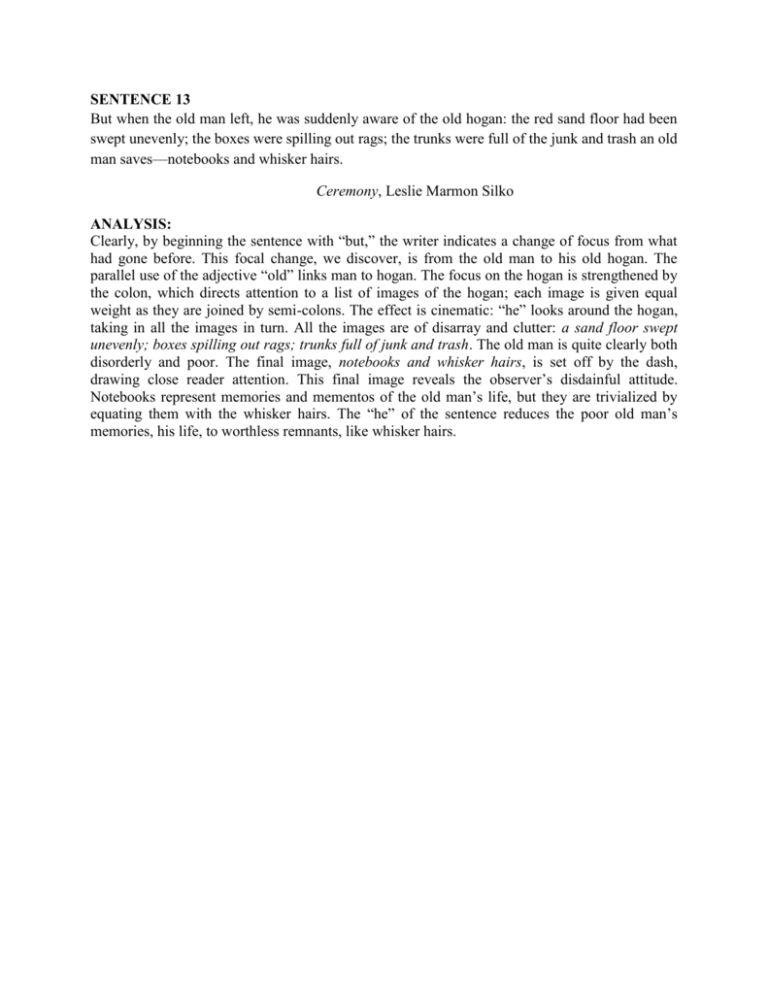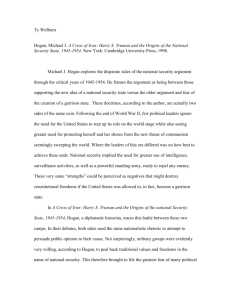Ceremony: Literary Analysis of Sentence 13
advertisement

SENTENCE 13 But when the old man left, he was suddenly aware of the old hogan: the red sand floor had been swept unevenly; the boxes were spilling out rags; the trunks were full of the junk and trash an old man saves—notebooks and whisker hairs. Ceremony, Leslie Marmon Silko ANALYSIS: Clearly, by beginning the sentence with “but,” the writer indicates a change of focus from what had gone before. This focal change, we discover, is from the old man to his old hogan. The parallel use of the adjective “old” links man to hogan. The focus on the hogan is strengthened by the colon, which directs attention to a list of images of the hogan; each image is given equal weight as they are joined by semi-colons. The effect is cinematic: “he” looks around the hogan, taking in all the images in turn. All the images are of disarray and clutter: a sand floor swept unevenly; boxes spilling out rags; trunks full of junk and trash. The old man is quite clearly both disorderly and poor. The final image, notebooks and whisker hairs, is set off by the dash, drawing close reader attention. This final image reveals the observer’s disdainful attitude. Notebooks represent memories and mementos of the old man’s life, but they are trivialized by equating them with the whisker hairs. The “he” of the sentence reduces the poor old man’s memories, his life, to worthless remnants, like whisker hairs.











